West Hartford Slaves Will Not Be Forgotten Thanks to ‘Witness Stones’

Audio By Carbonatix
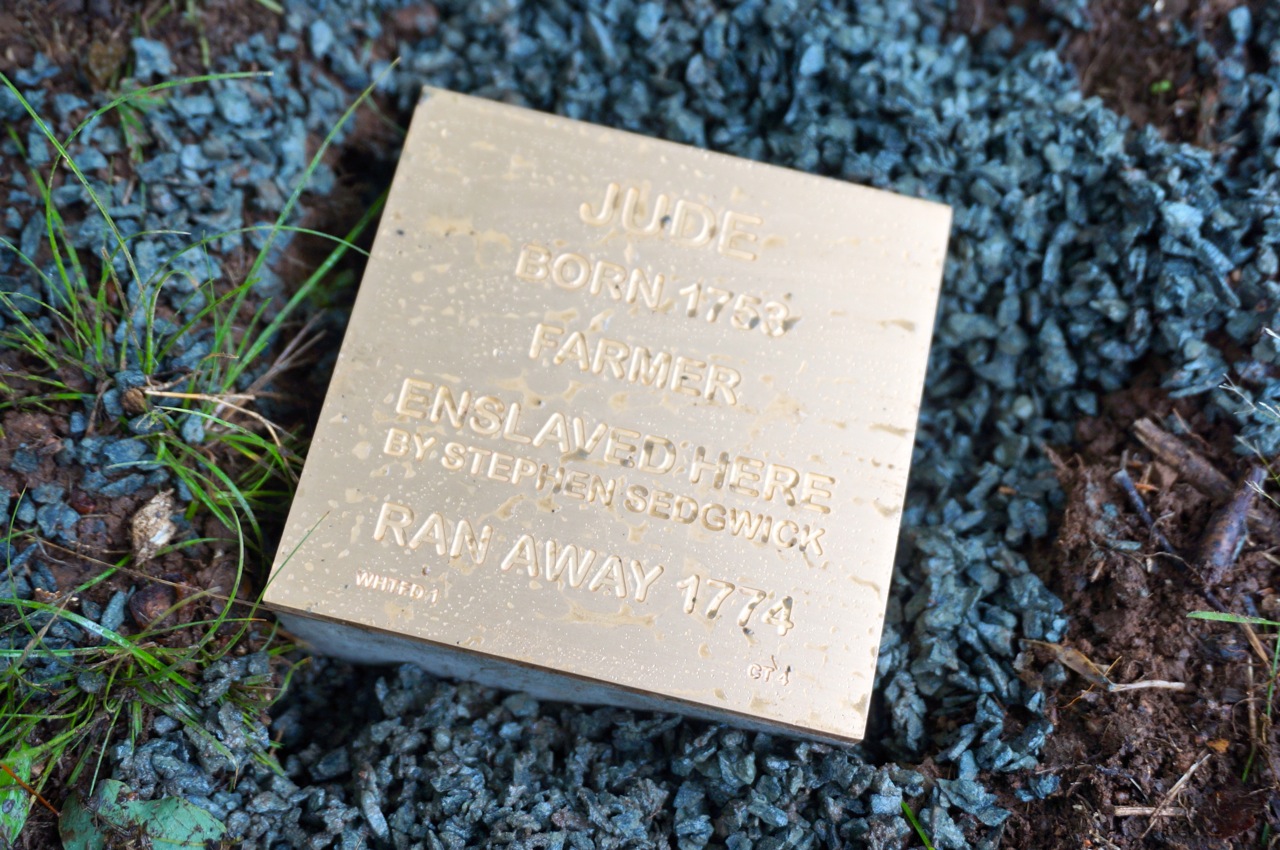
Jude was one of the formerly enslaved people who lived in West Hartford and is now memorialized with a Witness Stone. Photo credit: Ronni Newton (we-ha.com file photo)
Several ‘Witness Stones’ have been placed in West Hartford’s Old Center Cemetery to acknowledge the enslaved.
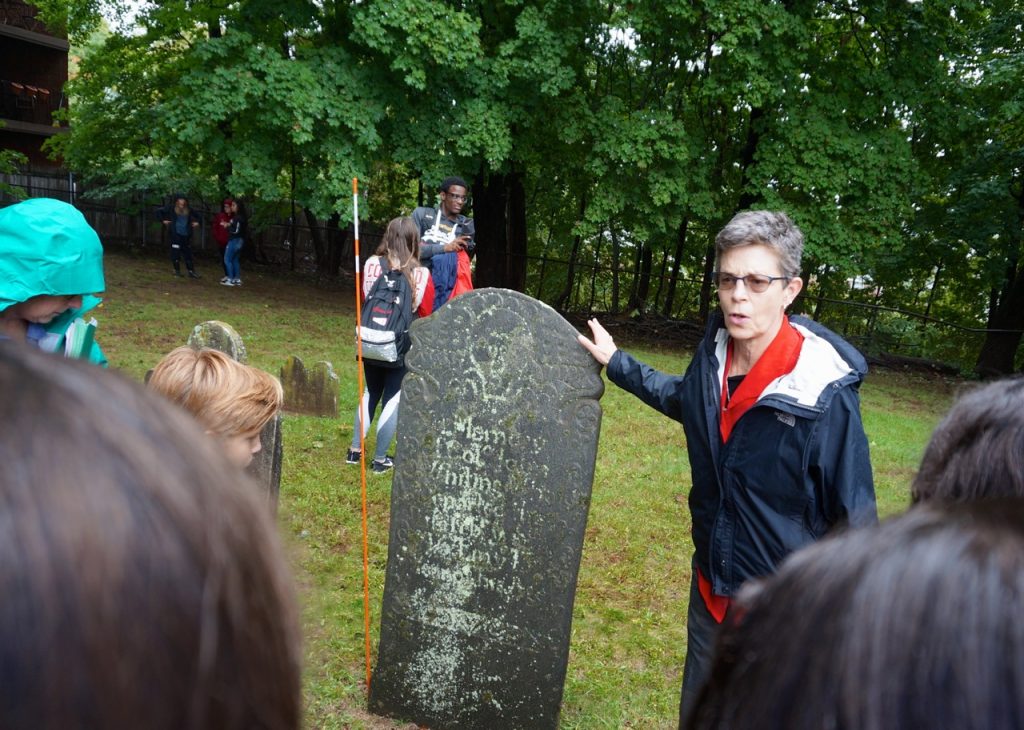
Dr. Tracey Wilson speaks with students and others about the “Witness Stones” project at Old Center Cemetery. Photo credit: Ronni Newton
By Ronni Newton
In the West Hartford of today – a community with a diverse population, where more than 70 primary languages are spoken in the public schools, a place where human rights are celebrated – it seems inconceivable that slavery ever existed, but in fact some of the town’s most prominent families were once slaveowners.
While the legacies of those families – the Sedgwicks, Goodmans, Coltons, Hookers, and others – have been memorialized in the town’s history, and schools and roads bear their names, the men and women whom they enslaved have largely been forgotten.
The “Witness Stones” Project plans to change that, to acknowledge that slavery existed in West Hartford, and to commemorate the lives of those who were enslaved, even if the historical record contains few details of their lives. It’s also intended to inspire community conversation.
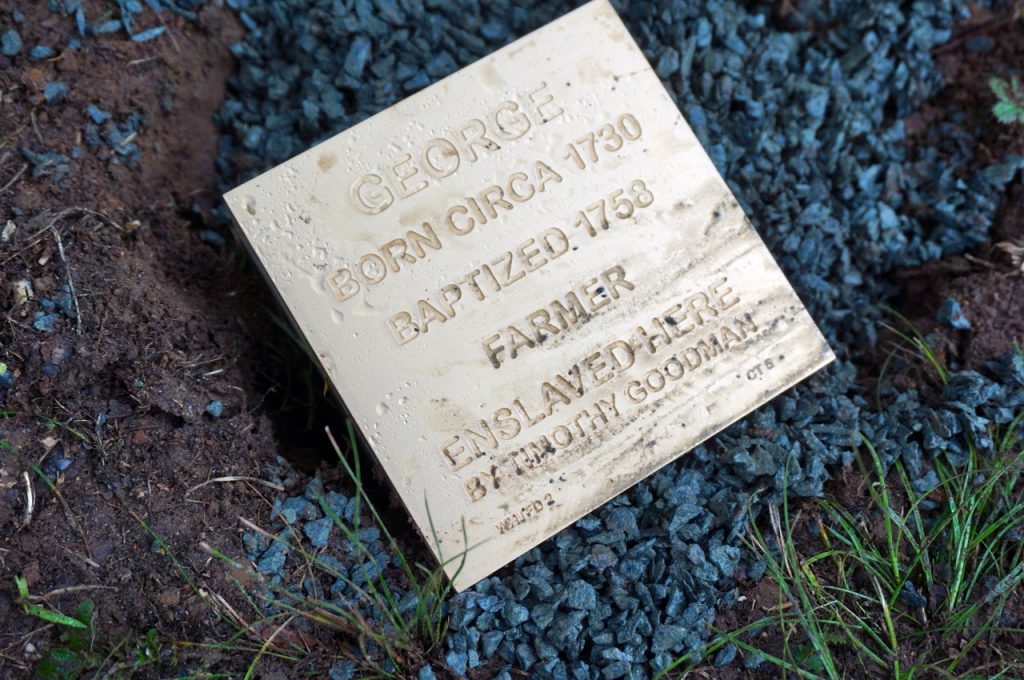
George is one of the slaves who lived in West Hartford and is now memorialized with a Witness Stone. Photo credit: Ronni Newton
On Sept. 26, two brass plaques were installed in the Old Center Cemetery on North Main Street, the town’s first witness stones bearing the names of “Jude” and “George,” enslaved me who lived in West Hartford (then known as the West Division) in the 1700s.
“The presence of slavery in West Hartford’s history makes us face the complicated relationship of both owners and and enslaved people, including the oppression, dehumanization, paternalism, and agency and resistance involved in this system,” wrote Liz Devine and Tracey Wilson, directors of the “Witness Stones” project.
Devine, a retired history teacher from Hall High School, and Wilson, a retired history teacher from Conard High School who is also West Hartford’s town historian, helped develop the primary sources that were used for research into the lives of George, who was once owned by Timothy Goodman, and Jude, who was owned by Stephen Sedgwick.
In Connecticut, the Witness Stones project began in Guilford in 2017, led by eighth grade U.S. History teacher Dennis Culliton. The project actually has its origins in the Stolpersteine Project which began in Germany in 1992 and has spread to 22 European countries, where “stumbling stones” were placed outside of the last known residences of Holocaust victims.
The Witness Stones project was brought to West Hartford in the spring of 2018, when 42 students in Sean O’Connor’s AP U.S. History class began researching George and Jude, and studying more about Bristow, the namesake of West Hartford’s Bristow Middle School and the only African American to have a headstone in the Old Center Cemetery. The students worked with Devine and Wilson, as well as the Noah Webster House & West Hartford Historical Society and First Church’s Webster Library, to uncover a history that has previously not been in the spotlight. They worked to answer the question: “Why bear witness to slavery in West Hartford?”
The students, most of whom are now seniors, shared their research and participated in a public program to honor George and Jude, held on Sept. 26 at First Church.
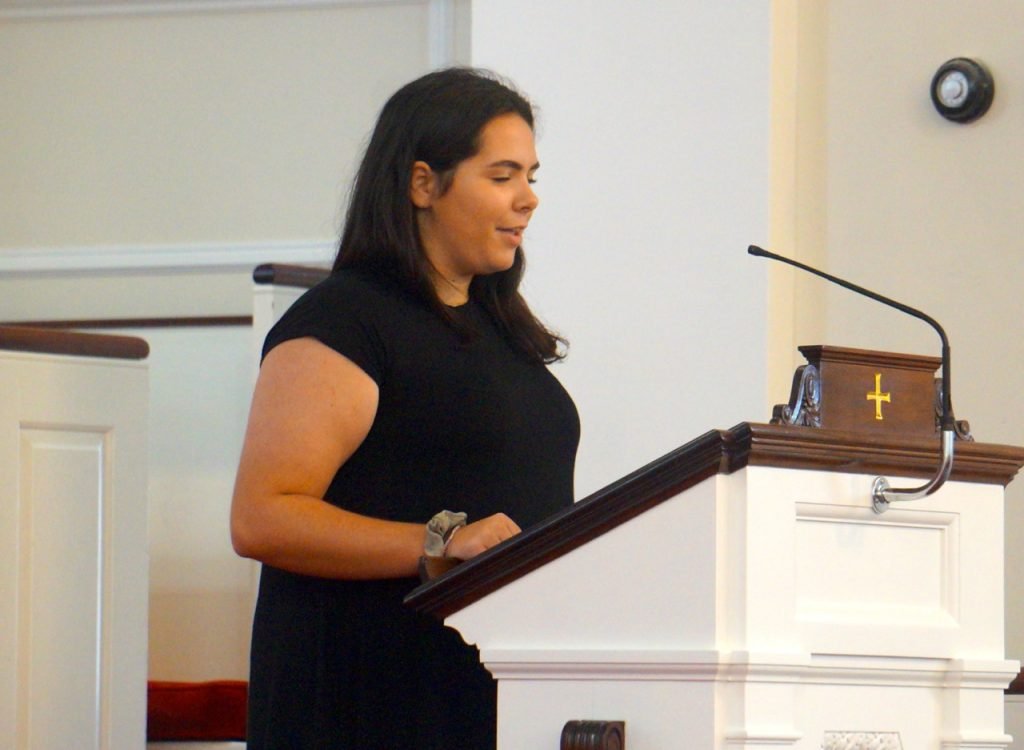
Conard student Bella Celio emceed the Witness Stones project ceremony. Photo credit: Ronni Newton
Conard senior Bella Celio, noted that as she learned the stories of Jude and George, she became fascinated with the history of men who have largely remained unknown for more than 200 years.
Speakers at the event included Mayor Shari Cantor, who shared her impressions of having seen the Stolpersteine Project in Europe. “The past pauses the present and sows the future,” Cantor said. “Maybe shameful history is even more important to learn and to talk about.”
The Sedgwicks and Goodmans attended First Church, and George and Jude also likely attended the church – which at the time had its meeting house located across the street. “While George and Jude did not enter this [exact] building, this is one of the places that their presence was recorded, said Jennifer DeSimas, director of the John P. Webster Library at First Church.
Jennifer DiCola Matos, executive director of the Noah Webster House & West Hartford Historical Society, said that Noah Webster himself was an early abolitionist, and unlike the Goodwins and Sedgwicks, his family did not own slaves.
Matos said we know something about the important white men of the region from that era, but not much about George and Jude. “At that time, George and Jude’s stories were not deemed important enough to be recorded. Well, things have changed.” Through the Witness Stones project, we have been able to glean some knowledge of their lives, and it is important, she said.
State Senator Beth Bye said that the Witness Stones project is extremely relevant to today’s world, and the commemorating of the lives of the enslaved is important. She praised the students for their role in the project, which may have started out as an assignment but resulted in stories that move people.
“These stories will be a reminder to those in this community that we had slave owners … but you helped give people who were slaves agency,” Bye said. “I’m never going to hear the word ‘Sedgwick’ quite the same way again.”
Superintendent of West Hartford Public Schools Tom Moore said, “People say ignorance is bliss – it’s easier not to know … but can we afford to do that? Can we afford to not think about things?”
Moore said that he wishes West Hartford had truly been a paragon of anti-slavery. “With Witness Stones, you’re bearing witness to a history that you can’t bear to take the easy way. … Being a historian, being witness, means standing up for others,” Moore said.
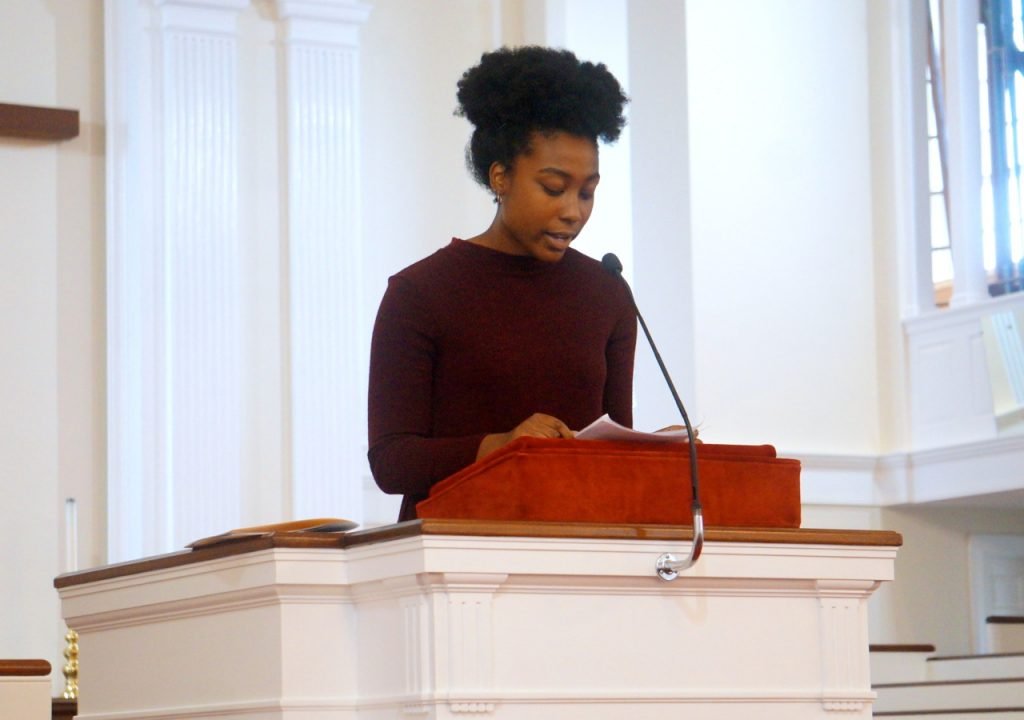
Conard student Ajsha Malcolm presents the life of Jude. Photo credit: Ronni Newton
Conard student Asjha Malcolm presented “The Life and Times of Jude of the West Division,” reading from the biography she had developed along with fellow Conard students Jaza Amchock, Janelle Isaacs, Cameron Slocum, Thomas Wilson, and Xiao Xin Xie.
Jude, who according to available records was born c.1753, was originally owned by Stephen Sedgwick Sr., who passed him down to his son, Stephen Sedgwick Jr., in his will that was discovered through probate records. Jude was listed among an inventory of property that also included 110 acres of land, 20 cows, 45 sheep, 12 swine, five horses, one bull, and two yoke of oxen.
In 1774, Jude, then 21, ran away. In a runaway notice published in the Connecticut Courant, Jude was described as a mulatto, leading the students to theorize that he may have actually been the son of Stephen Sedgwick Sr. and an African mother. Although $20 was offered as a reward for Jude’s return, no further information could be found about his destiny.
Xavier Blackwell-Lipkind, a Conard junior, presented “The Life of George: A Forgotten Connecticut Man,” the research he completed along with fellow Conard students Nandini Bhatt, Kate Bronson, Grace Cancian, and Noah Case.
According to information the students developed with the assistance of Devine and Wilson, George was born c.1730 and baptized in 1758. He was owned by Timothy Goodman, who lived at 567 South Quaker Ln., owned a post office and a tavern in the part of town now known as Bishops Corner, and is the namesake of “Goodman Green,” the triangle of land at the southern end of the intersection of Farmington Avenue and South Main Street.
No information could be developed about when George died, but a runaway notice was not found either.
The full text of the students’ research about Jude and George can be found in the PDF of the “Witness Stones” project report below.
Before the presentation ended, Board of Education member Lorna Thomas-Farquharson thanked all who participated in the project thus far, as well as sponsors Jane Lehman and Matt Winter and the Sandra and Arnold Chase Family Foundation.
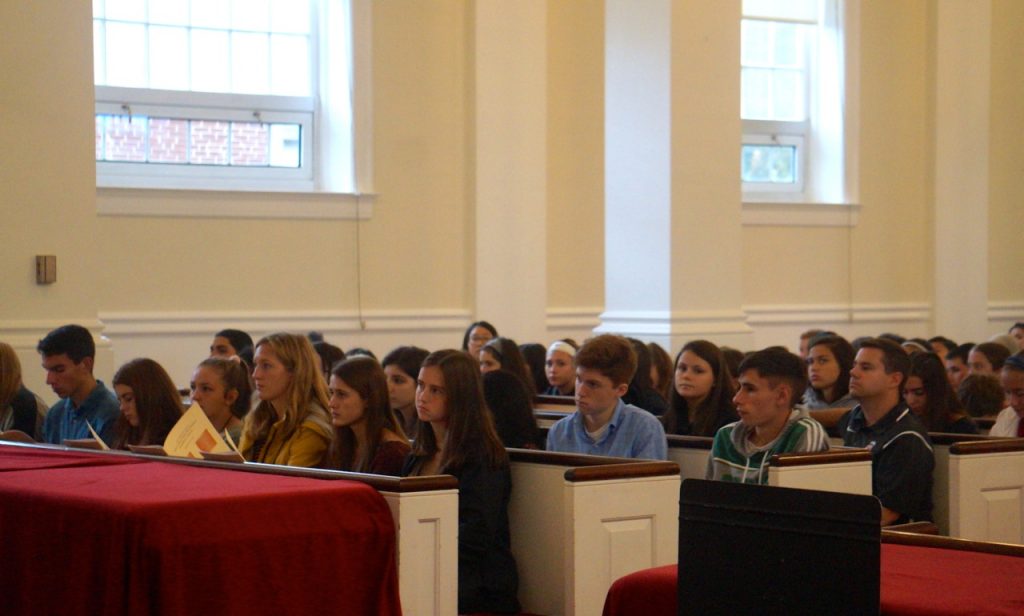
Audience at the Witness Stones ceremony at First Church. Photo credit: Ronni Newton
“Today is about learning,” Thomas-Farquharson said, and to pay homage to George and Jude. The project is a way to reflect on the work we still have to do, and spark discussion in todays cultural climate.
Following the ceremony, the audience, which included 120 King Philip eighth-graders and about 50 Conard students from the U.S. History Through the African American Experience class, walked to the Old Center Cemetery at 34 North Main St. There they saw the actual Witness Stones, which have been placed near Bristow’s gravestone.
The research teams answered questions about the Sedgwick and Goodman families, who are buried in the cemetery, and attendees also had the opportunity to see the graves of other prominent residents, like the Hookers and Coltons, who were also known slaveowners, and will be part of the next phase of the Witness Stones project. Research into those families and several others, and those they enslaved, is being undertaken by Conard teacher Steve Bassi’s AP Research students and Sally Nyhan’s classes at King Philip Middle School.
More information about the Witness Stones can be found here on the Noah Webster House & West Hartford Historical Society website.
Some of the primary sources used by the students can also be found here on the West Hartford Witness Stones Project at this Googlesite.
Like what you see here? Click here to subscribe to We-Ha’s newsletter so you’ll always be in the know about what’s happening in West Hartford!
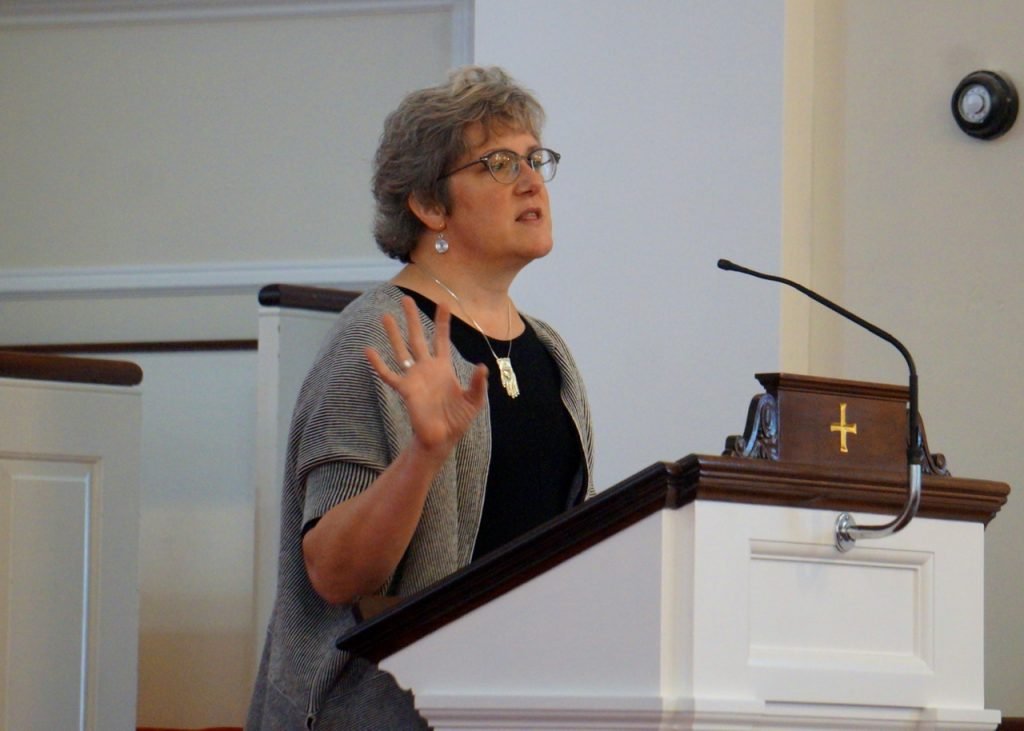
Jennifer DeSimas from John Webster Library at First Church. Photo credit: Ronni Newton
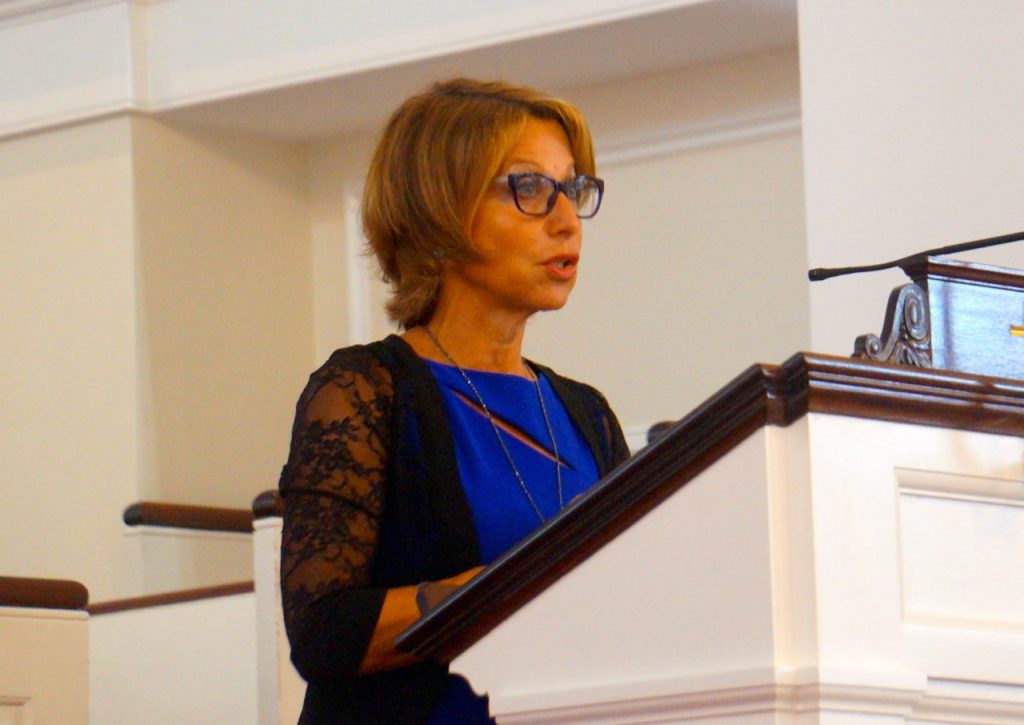
West Hartford Mayor Shari Cantor. Photo credit: Ronni Newton
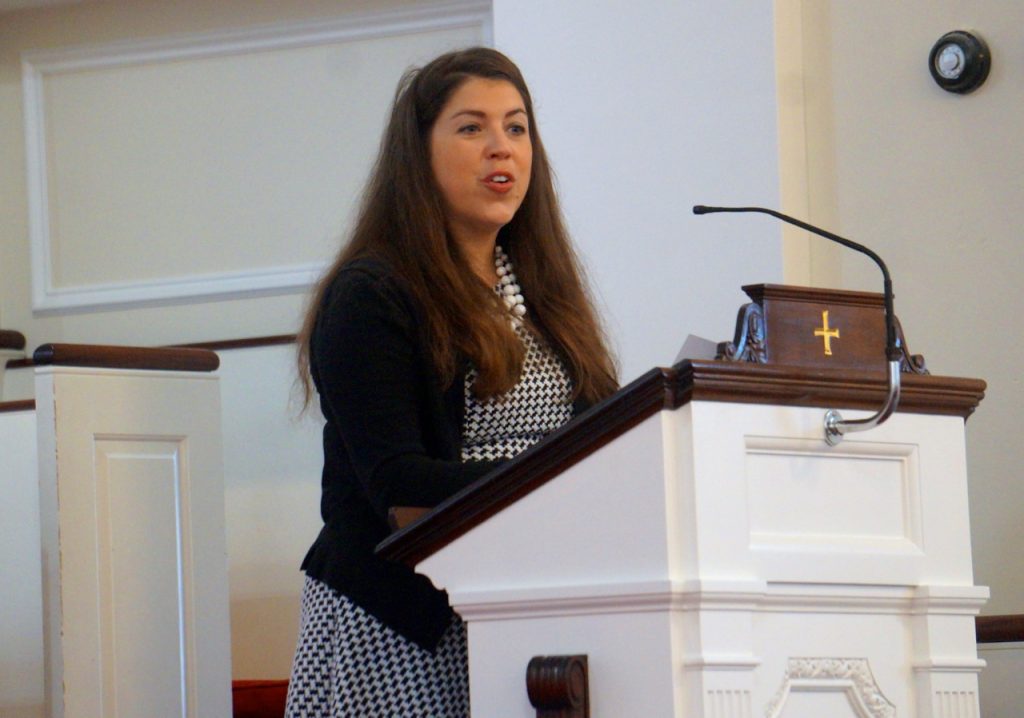
Noah Webster House & West Hartford Historical Society Executive Director Jennifer DiCola Matos. Photo credit: Ronni Newton
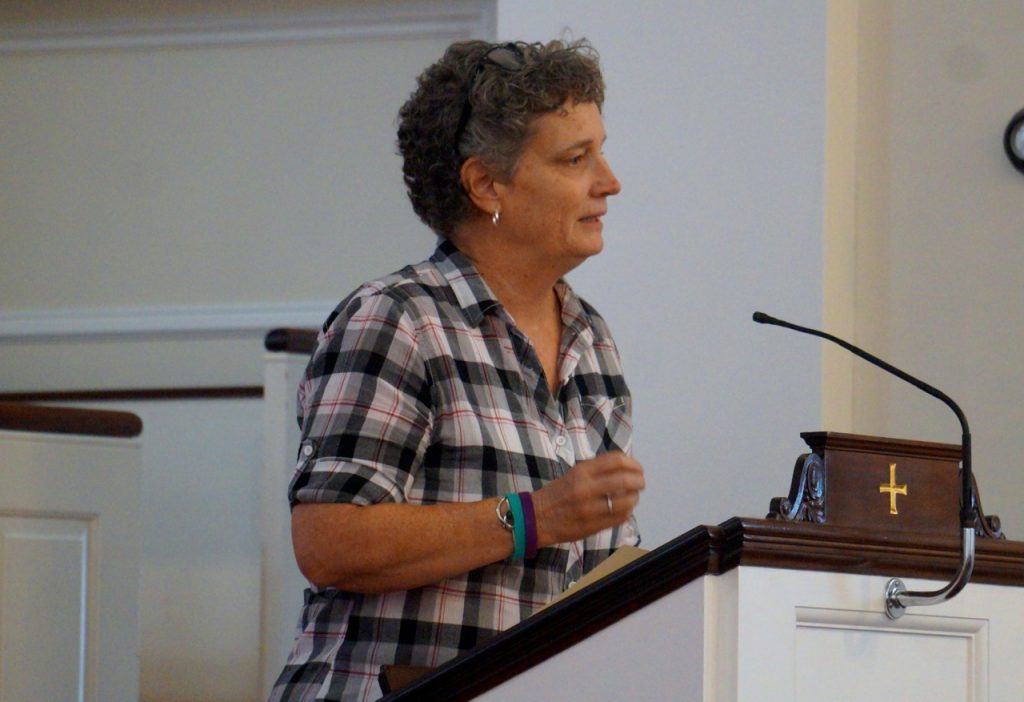
State Sen. Beth Bye. Photo credit: Ronni Newton
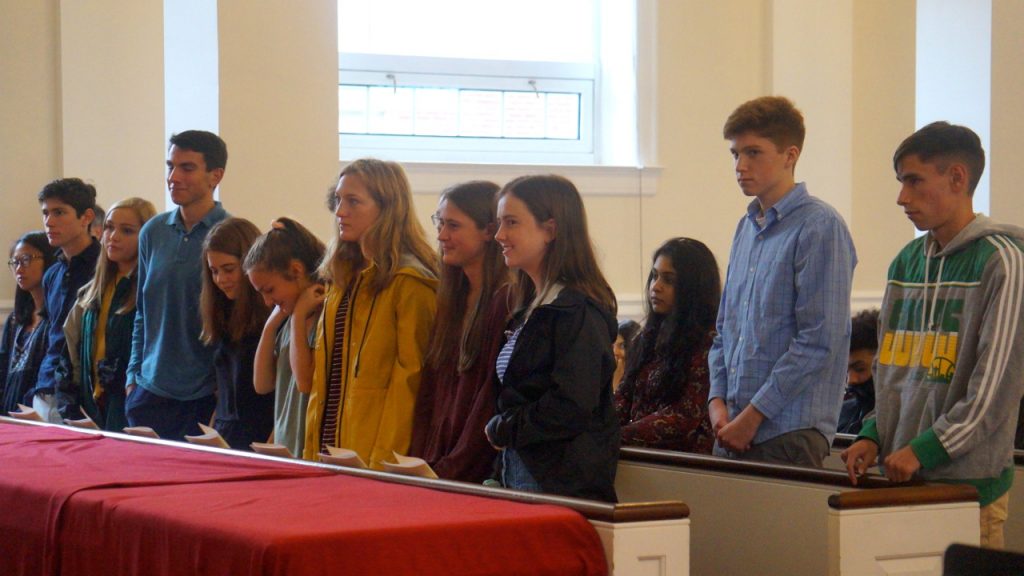
Conard students are recognized at the Witness Stones ceremony. Photo credit: Ronni Newton
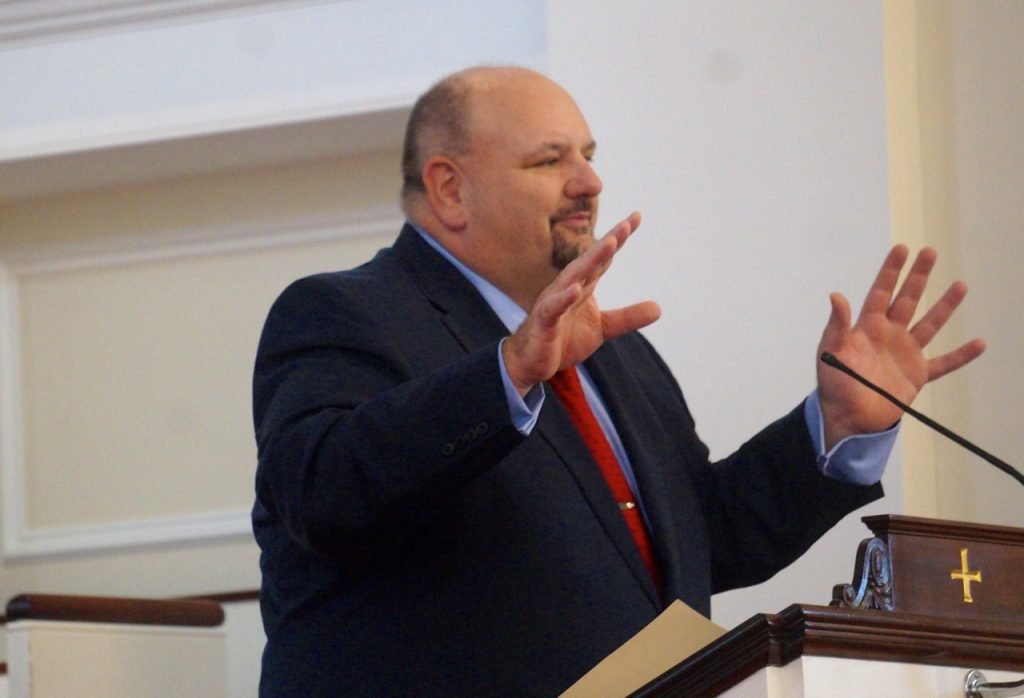
Superintendent of Schools Tom Moore. Photo credit: Ronni Newton
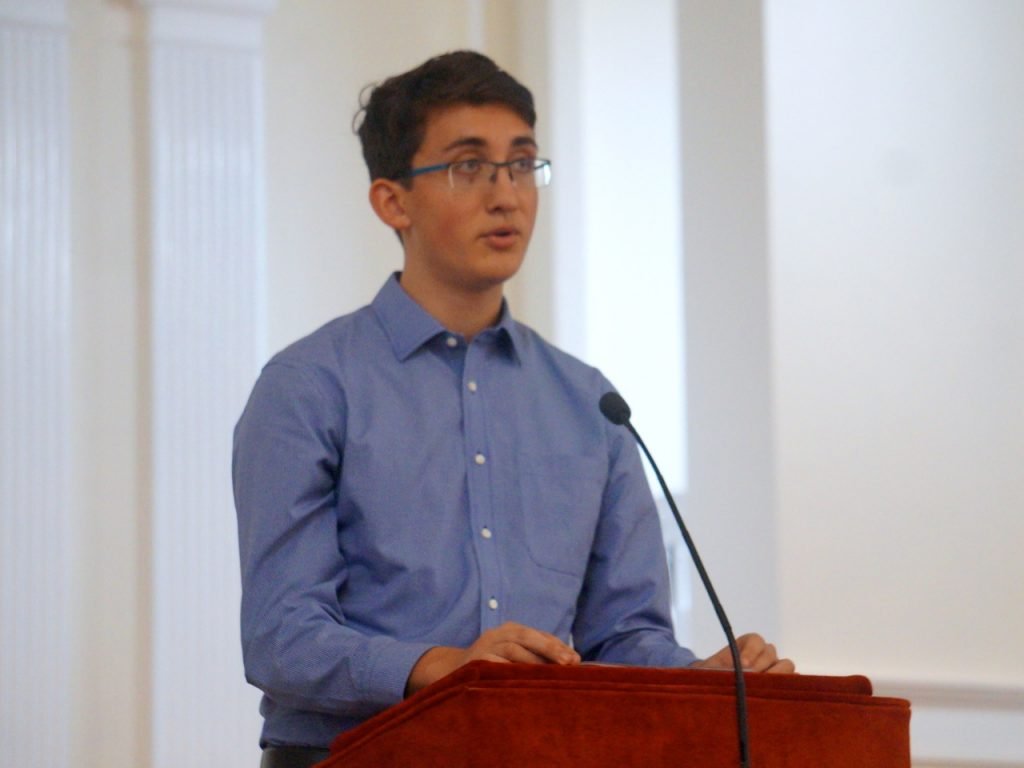
Xavier Blackwell-Lipkind presented the life of George. Photo credit: Ronni Newton
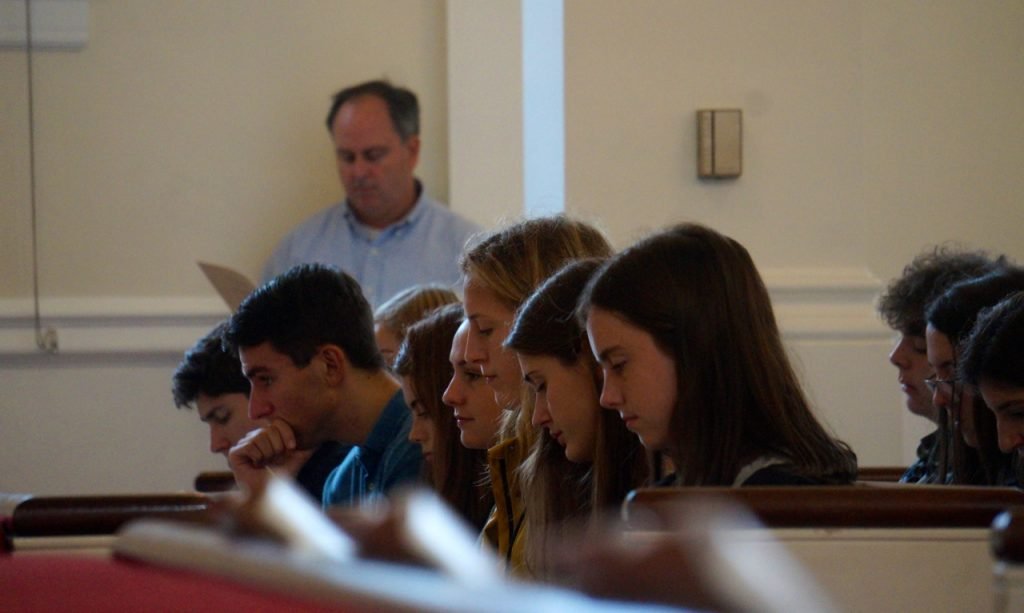
Witness Stones ceremony at FIrst Church. Photo credit: Ronni Newton
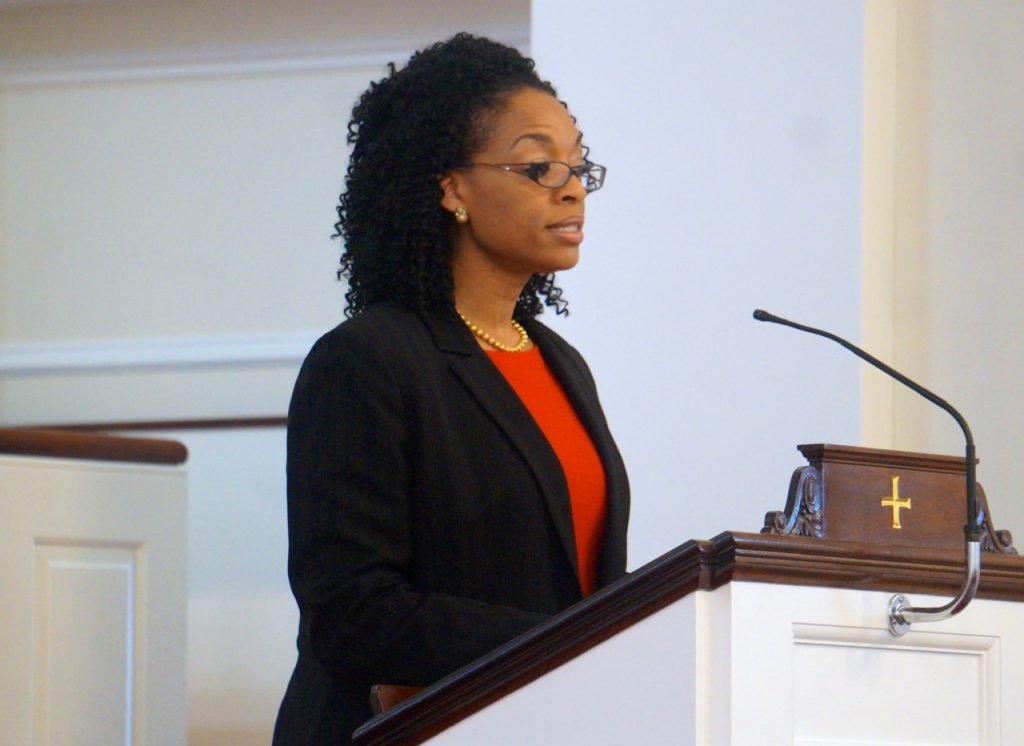
Lorna Thomas-Farquharson. Photo credit: Ronni Newton
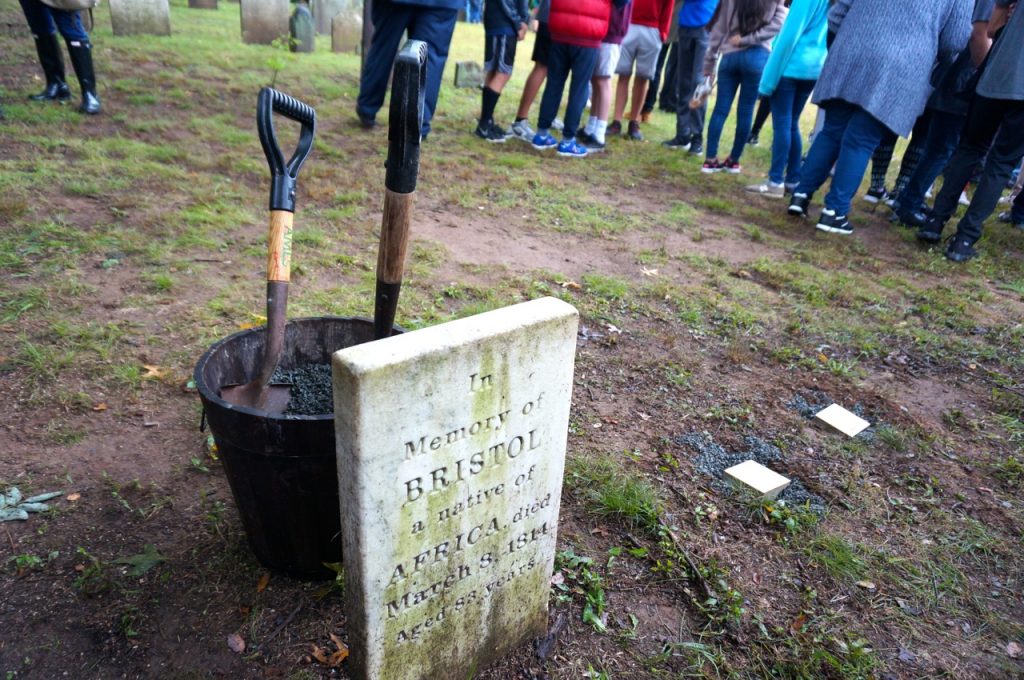
The Witness Stones have been placed next to Bristow’s [aka Bristol] headstone in Old Center Cemetery on North Main Street. Photo credit: Ronni Newton
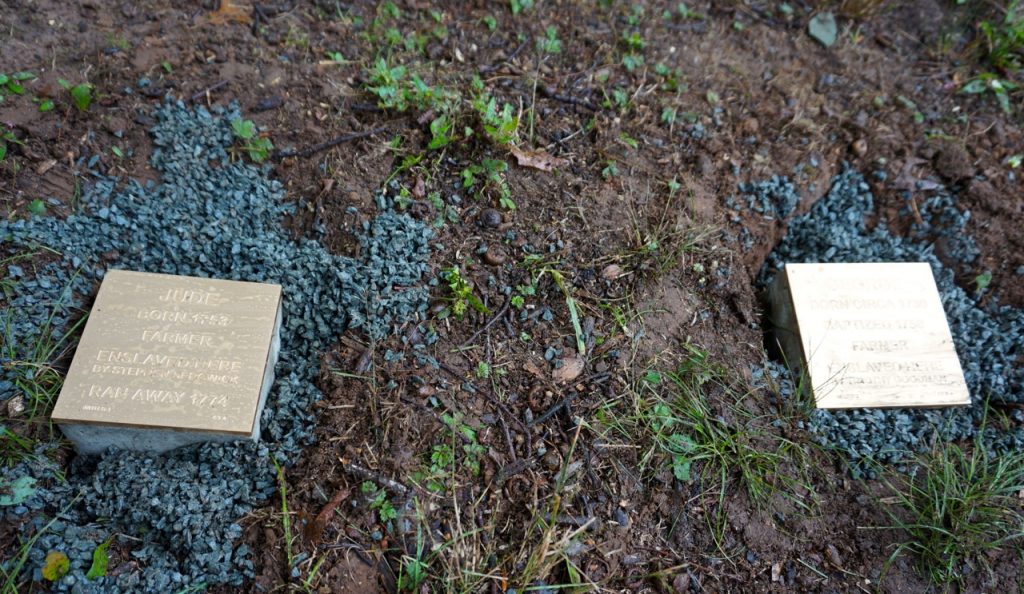
The Witness Stones have been placed next to Bristow’s headstone in Old Center Cemetery on North Main Street. Photo credit: Ronni Newton
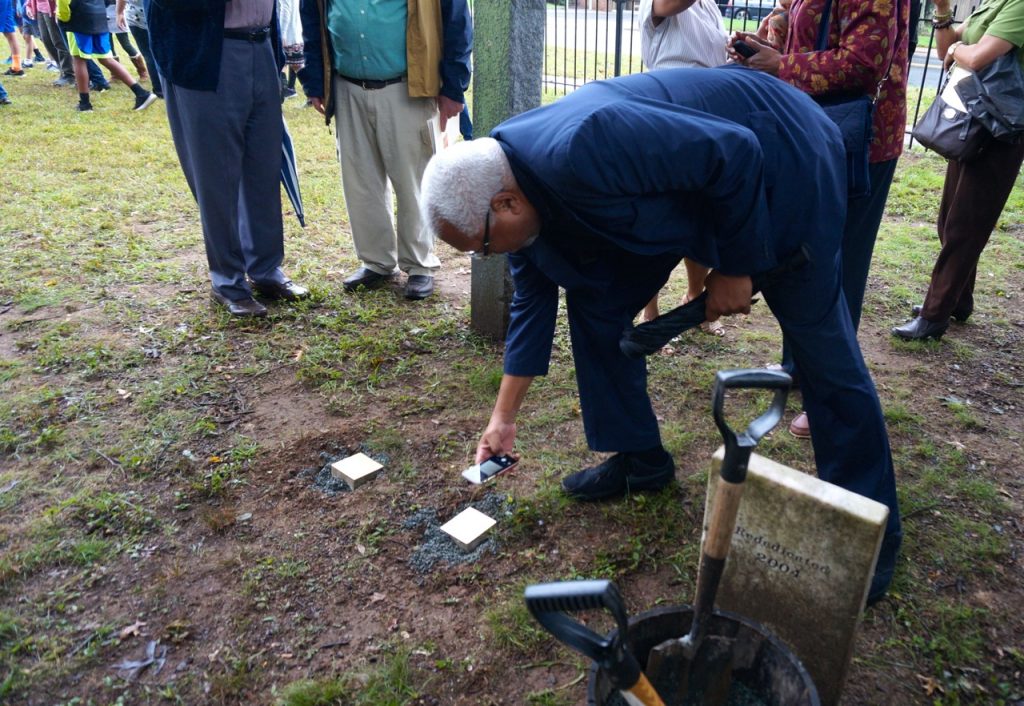
The Witness Stones have been placed next to Bristow’s headstone in Old Center Cemetery on North Main Street. Photo credit: Ronni Newton
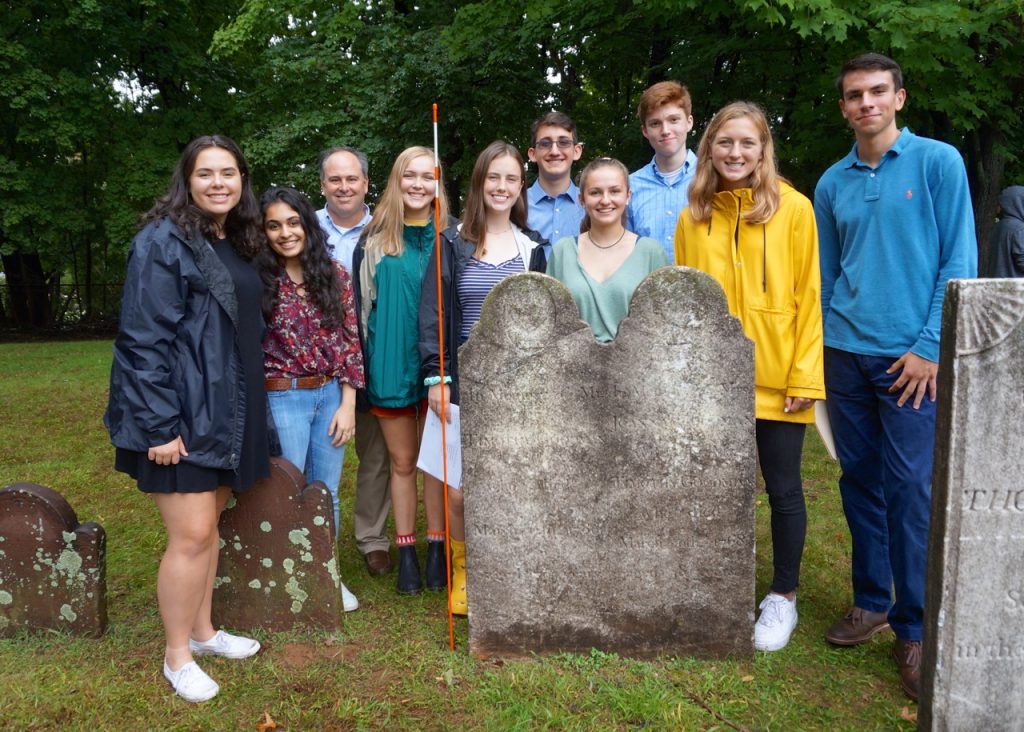
Conard students who researched Jude stand near Stephen Sedgwick’s headstone. Photo credit: Ronni Newton

Conard students who researched George stand near Timothy Goodwin’s headstone. Photo credit: Ronni Newton
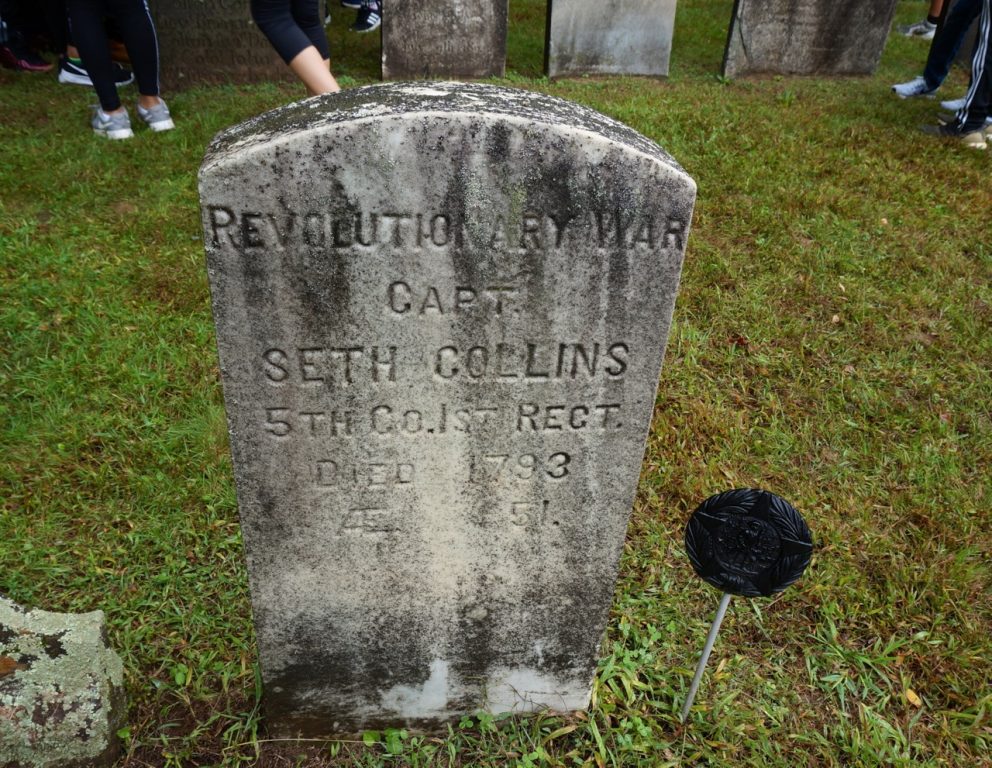
Headstone of another former slaveowner in West Hartford. Photo credit: Ronni Newton
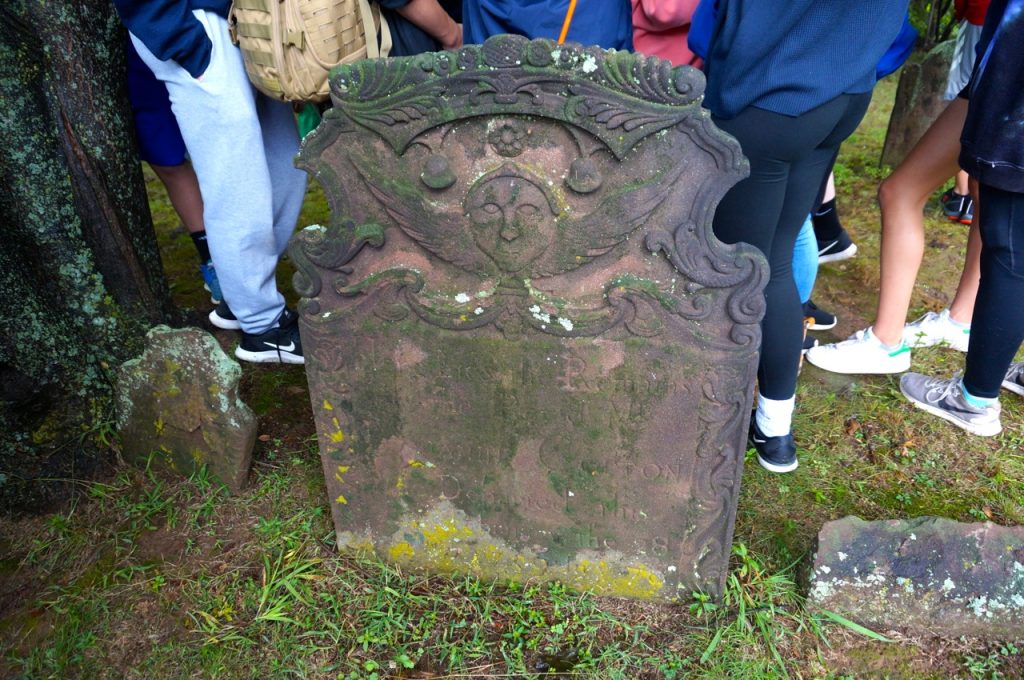
Photo credit: Ronni Newton
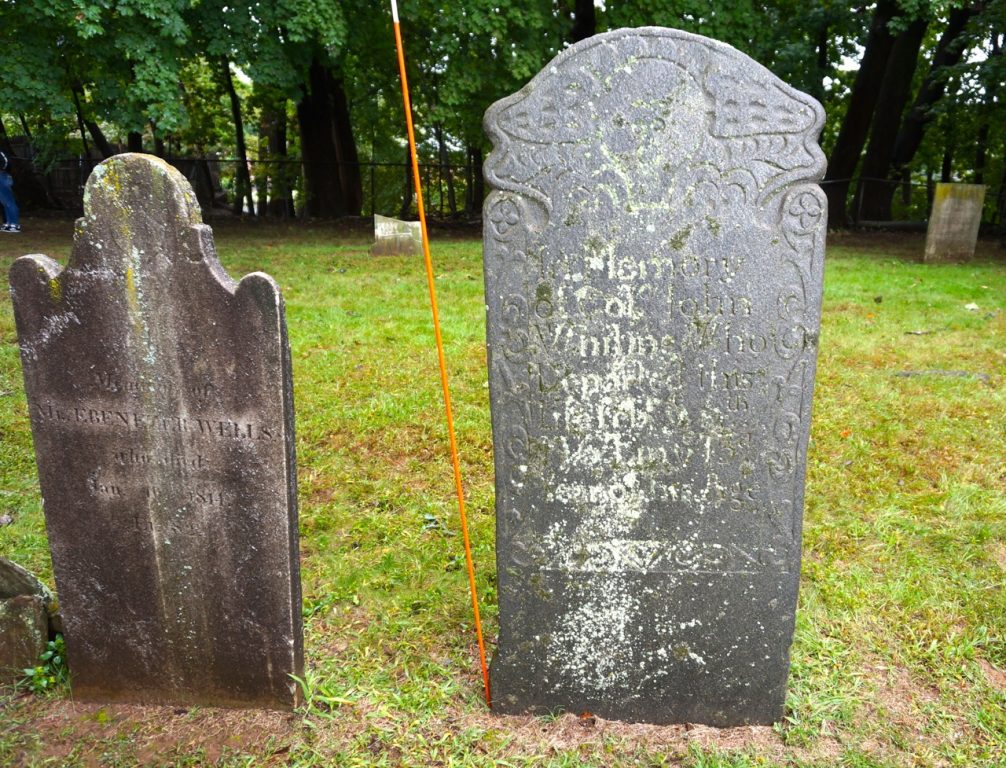
Photo credit: Ronni Newton
 Loading...
Loading...


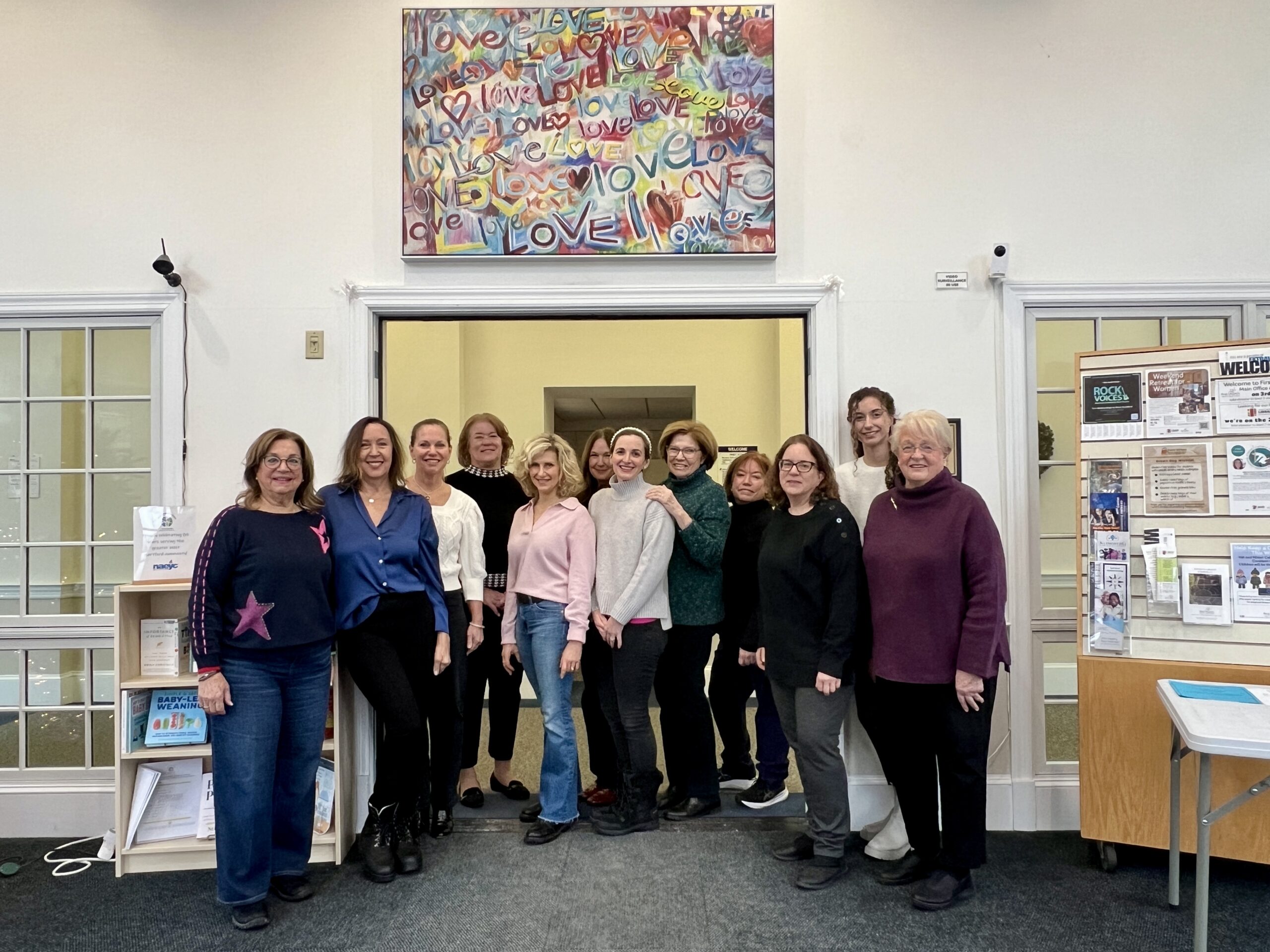
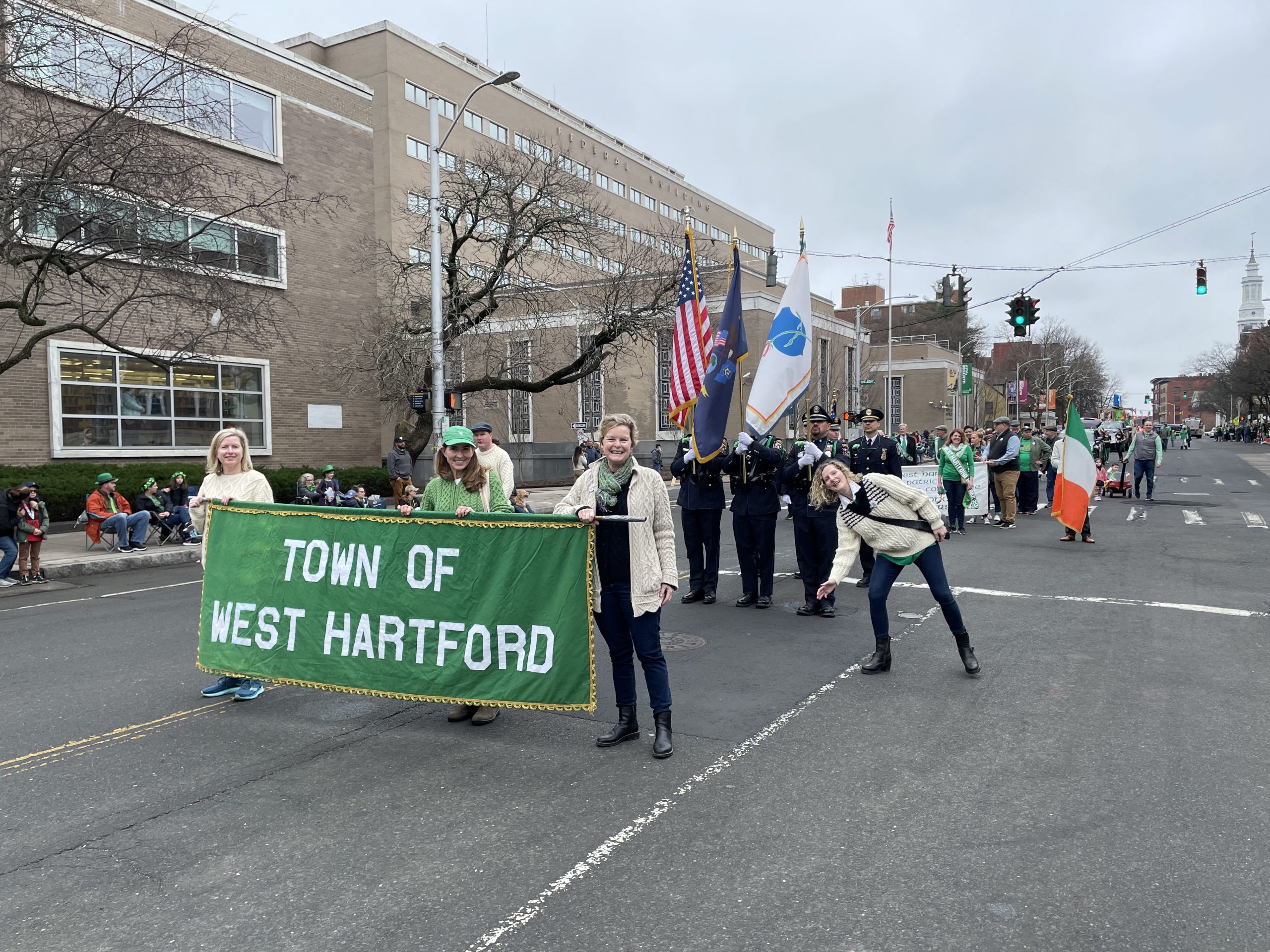
[…] Through research, education, and civic engagement, the Witness Stones project seeks to restore the history and to honor the humanity and contributions of the enslaved individuals who helped build our communities. The Witness Stones project is modeled after the Stolpersteine (stumbling) stones that commemorate those who died in the Holocaust with over 70,000 stones in 22 countries across Europe. In West Hartford, the project is teaching students about Connecticut’s slave holding past and commemorating enslaved individuals whose stories have not previously been told. In 2018, the first Witness Stones for Jude and George were installed. […]
[…] build our communities.” Through immense research, exploration, and analysis of local history, West Hartford, which began a Witness Stones Project in 2018, was able on Saturday to honor another 10 of the 100-plus formerly-enslaved individuals who walked […]